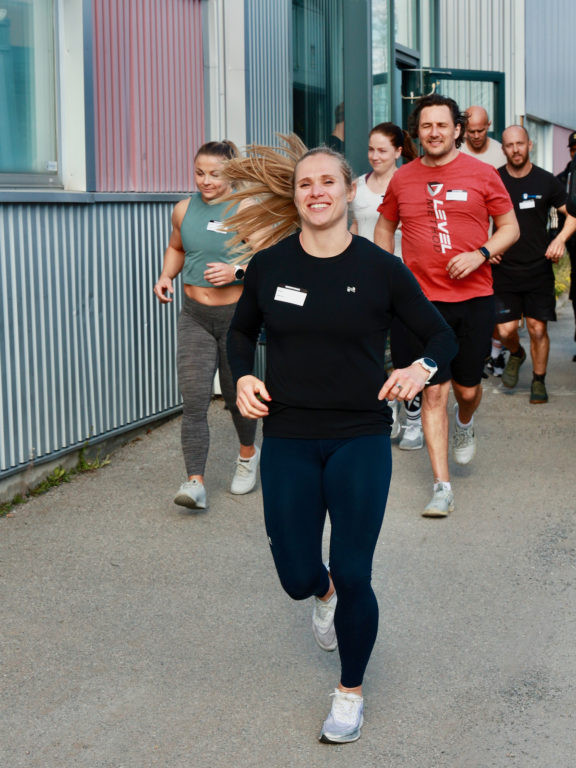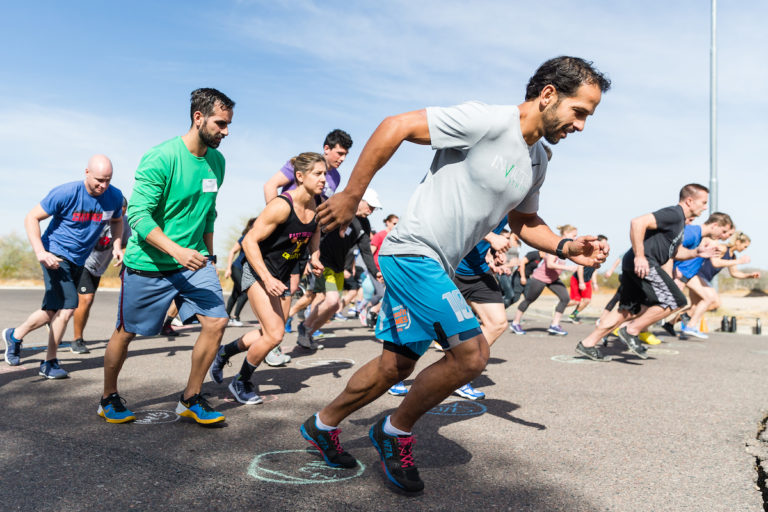Self-efficacy is the belief in oneself that they can succeed at a given task. There are many ways to increase self-efficacy. In this series of articles, we are discussing the four main sources outlined by Dr. Albert Bandura, which are mastery experiences, vicarious experiences, social and verbal persuasion, and physical and emotional states. In the first article in this series, we laid the foundation for the need for behavior change in the CrossFit affiliate and discussed how mastery experiences can be used to increase self-efficacy. We will now focus on how vicarious experiences can be used to increase an athlete’s self-belief.
Increasing self-efficacy through vicarious experiences can be accomplished using both modeling and imagery. With modeling, another person’s successful experiences are used to show and prove the possibility of achieving goals and succeeding. This has a profound effect on an athlete’s belief in their abilities, especially if those they are watching are similar to themselves. This can be a partial explanation of the Roger Bannister effect. As high-level runners watched Roger Bannister model the sub-four-minute mile, others were able to accomplish the same feat within the next year. If the model is relatable, and succeeds at a task we have not succeeded at yet, it proves a possibility for us to succeed. Sometimes that is all it takes.

Coaches and affiliate owners have the ability to provide these experiences every day. At every class, the coach can quickly highlight a successful athlete. Did they get their first pull-up, finish their 50th workout, PR a lift, finally get full-depth on the squat, progress to a smaller band? The list is endless for these quick success stories. All it takes is some time and commitment to talking to your athletes and sharing their success stories. The new athlete learns from these stories. They learn the behaviors and habits necessary to be successful. You can also use your experienced athletes as models to demonstrate quality movement for the class. This provides a little mastery experience for the experienced athlete and a vicarious experience for the newer athletes.
On a macro level, you can take the larger success stories and share them on your social media page. Stories about losing a significant amount of weight, regaining functionality, improving mental health, having more energy for the kids, or being able to reduce or fully get off medication, can be very impactful and deserve a little more attention. These should be written in such a way to celebrate the athlete’s success (mastery experience) and motivate others (vicarious experience).
Remember, as the coach, you are the ultimate model. Athletes are always watching what you do inside and outside of the gym. Whether you like it or not, you are providing the standard. If you want your athletes to act a certain way, whether it is scaling, cheering others on, eating quality foods, stretching, or working on weaknesses, you better be doing it, too. As a coach, you’re a teacher, transmitting knowledge of how to live a proper lifestyle. If you are constantly on social media, and eating donuts and pizza, this is the lifestyle being transmitted to your athletes.
Imagery is another way to provide a vicarious experience. Here, you are using the image of an athlete’s past success, or potential future success, as a way to motivate and build confidence. This can be used as a way to reframe most negative images and feelings. For example, if a new athlete tells you they are really down on themselves because they used to be fit, but let themselves go, use this past experience to your advantage: “Well, that’s great. Now we both know that you can do it. Let’s take a moment to remember what it felt like when you were in that condition, then make a plan to get you back.”
 When it comes to potential future success, you want the athlete to imagine succeeding at the task they are worried about. For instance, new athletes tend to get nervous about joining the group class because they worry about being the most out of shape person there. Have the athlete take a moment to accept this challenge as part of starting something new. Before they showed up, someone else was in the same position. Before they know it, they will be keeping up with the group. A coach can use this to add a process-oriented goal to it: “Before you showed up, Chris was the slowest in the class. This is part of starting something new. Soon, you’ll be like Chris and someone else will show up with the same fear as you. You are all sharing this experience and you will soon be keeping up with the group. Let’s get you in here 3-5 times a week for the next six weeks, and you’re going to see some pretty amazing progress.” Making sure they get in at least three days a week, for the next six weeks, is their process-oriented goal. Imagining themselves as a better athlete, who can keep up with the group, is a vicarious experience.
When it comes to potential future success, you want the athlete to imagine succeeding at the task they are worried about. For instance, new athletes tend to get nervous about joining the group class because they worry about being the most out of shape person there. Have the athlete take a moment to accept this challenge as part of starting something new. Before they showed up, someone else was in the same position. Before they know it, they will be keeping up with the group. A coach can use this to add a process-oriented goal to it: “Before you showed up, Chris was the slowest in the class. This is part of starting something new. Soon, you’ll be like Chris and someone else will show up with the same fear as you. You are all sharing this experience and you will soon be keeping up with the group. Let’s get you in here 3-5 times a week for the next six weeks, and you’re going to see some pretty amazing progress.” Making sure they get in at least three days a week, for the next six weeks, is their process-oriented goal. Imagining themselves as a better athlete, who can keep up with the group, is a vicarious experience.
Creating vicarious experiences can be a powerful coaching tool to increase self-efficacy. Remember, the model must be relatable to the athlete whose behavior you are trying to change. Seek out examples of success and share them with the group. Modeling is not the only way to create a vicarious experience, though. Coaches should also use imagery as a way to reflect on an athlete’s past successes and as a way to visualize future successes.
About the Author
Michael Giardina started CrossFit in 2005. He has worked as a trainer at a CrossFit affiliate and as a CrossFit Seminar Staff Flowmaster and Content Supervisor. He has competed at the CrossFit Games and served as a CrossFit Games Head Judge. He is a Certified CrossFit Coach (CF-L4), has a Master of Science degree in exercise physiology, a Master of Public Health degree, and works as CrossFit’s Senior Manager of Health Education.